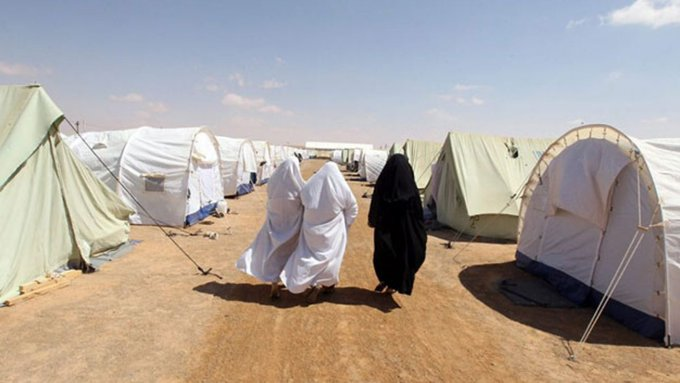
The ongoing armed conflict in Libya is going to push thousands of people, now asylum-seekers in Libyan camps, to escape towards the Southern border regions of Tunisia, Medenine and Tataouine, writes Mourad Teyeb.
The Tunisian government has, since last January, allocated an area at the Bir Fatnassia village, near Remada, for a refugee camp that will be managed by the UNHCR. The first stage of the camp will be conceived to host 25.000 people for a six-month period.
There are today about 700.000 migrants and asylum seekers in Libya, mostly from Africa but also from countries, all piled-up in inhumane conditions in detention centres in and outside Tripoli.
But, the international experience has shown that once started, nobody knows how long wars would last and what humanitarian cost they would have.
So, the risk exists that a camp in Fatnassia, Tunisia, lives longer than the planned six months and hosts double its planned capacity, if not more.
The Tunisian authorities have always publically and formally refuted any possibility that Tunisia becomes host to a kind of “permanent” refugees.
Yet, by signing the Mobility Partnership with the EU in 2015, and by allocating Fatnassia for the building of the camp, they accept total responsibility as well as possible repercussions of a similar move, including having sub-Saharan refugees for an unknown period of time on Tunisian soil.
That is why it is vital that Tunisia’s real intentions be publically expressed.
Beware a time-bomb in south Tunisia
A second major concern is that the Fatnassia camp is located in the middle of Tataouine governorate, a region that has been marked, the last five years, by social unrest and a high radicalization rate among its youth.
Remada, the town to which Fatnassia administratively belongs, is itself one of the poorest towns, the most under-developed in Tunisia.
Through the decades that followed Tunisia’s independence (1956) and even after the 2011 Revolution, its population has developed a feeling of resent and injustice that leads many of its youth to join jihadist groups in Libya and elsewhere.
Also frustrated by being unable to work in the numerous oil and gas companies operating in the region of Tataouine, some of which are not far from Remada, the youth of Remada and other neighbouring towns of Tataouine are a time-bomb.
The now-famous Kamour contestation movement of youth pleading for jobs in their region’s oil and gas companies has recently been re-launched. Marches and sit-ins have been organized in down-town Tataouine and planning is being made to go back to the Sahara for a new cycle of sit-ins. Some planned locations are a few kilometres away from Fatnassia.
Imagine tens of thousands of refugees who can become neighbours to thousands of angry, helpless Tunisian youth ready to do anything to challenge the authorities and revolt against their miserable life.
Thousands of mercenaries and jihadists have flocked to Libya during the past years. They came from Syria, Iraq, Sudan, Chad and maybe other countries like Tunisia itself and they are fighting with all the sides of the conflict there.
It’s also possible that many of them infiltrate the groups of refugees expected to end up in Fatnassia, carrying with them their extremist ideologies and, very likely, the most dangerous of extremist schemes.
A real intentions problem
With more than 4500 refugees and asylum-seekers now in the country, the burden could become heavier for Tunisia as well as for its international partners.
The majority of these persons are Syrians and the others are from Côte d’Ivoire, Eritrea, Ethiopia, Somalia, Sudan, Iraq, Yemen, Palestine, Cameroun and Libya. Their dream is to reach a Schengen state or to live with dignity in Tunisia, but never to go back to where they came from.
Tunisia, the European Union and the main international humanitarian organizations are already criticized and blamed for the mismanagement of the post-Choucha refugee camp (2011-2013) situation.
Under Tunisia’s current ailing economy, added to the social and political challenges of the Corona pandemic crisis, many questions will be raised.
Does Tunisia want or not to have African migrants on its soil?
Are international organizations, starting with the UN and other humanitarian agencies ready and able to achieve the required and honourable end to those who would flee an armed conflict in Libya?
What if the security situation escalates in Kamour, in Remada, or in other South-Eastern towns of the country, like Ben Guerdane?
Tunisia, the European Union and international organizations working in the migration sector have interest in identifying each one’s tasks and responsibilities when dealing with possible refugee flux from Libya to Tunisia and if they are serious to avoid the shortcomings of the Choucha camp experience.
